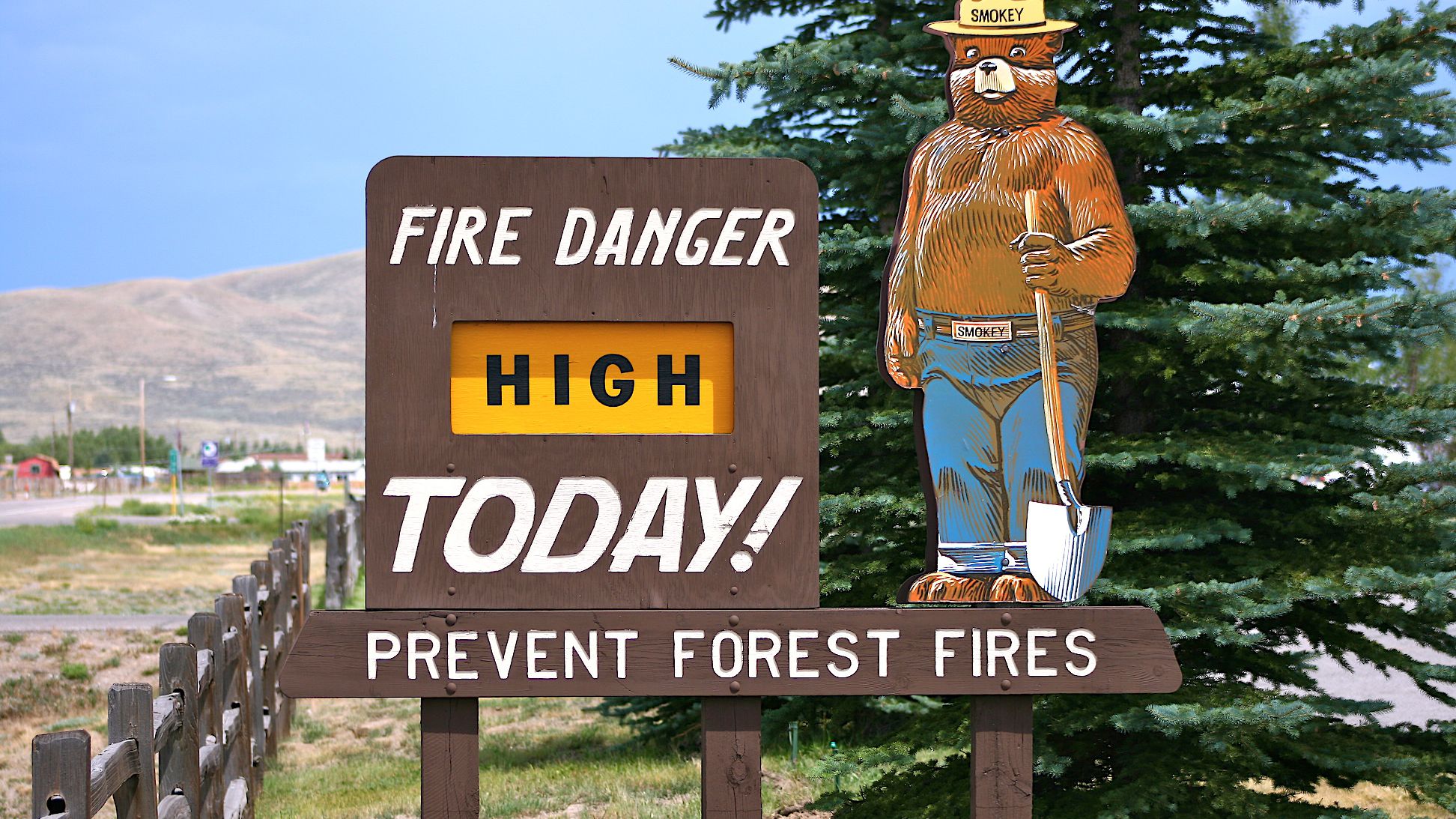“Remember Only YOU Can Prevent Forest Fires,” is a phrase that most people in the United States recognize. Smokey the Bear, a black bear with a personalized park ranger hat, blue jeans, and a shovel, touted this line time and again. He was introduced in 1944 as an advertising campaign for the United States Forest Service (USFS) in the fight against the forest fires that have plagued the West Coast of the United States for centuries.
And yet, “plagued” might not be the best word as forest fires are a natural constituent of these ecosystems. The biomes of the West Coast that are most susceptible to these forest fires are the Mediterranean shrubland (chaparral), woodlands, and many places with a semi-arid climate. These fire-dependent biomes are biologically adapted to utilize and facilitate fires for their regeneration and as a part of the natural life cycle. Thus, fires are essential to these biomes.
The Smokey Bear campaign intensified a negative stigma surrounding fires in these ecosystems and led people to believe that fires were unnatural. People were terrified of them, and rightfully so, as these fires ravaged their homes and communities. However, this fear further escalated the former fire suppression system that the United States had instilled in the early twentieth century. The objective of this was complete fire suppression which led to a buildup of flammable debris and inhibited the natural propagation of fire-dependent species.
The “Smokey Bear Effect” is another byproduct of fire suppression in which the historical pattern of small forest fires every five to ten years stopped from 1800 to the 1900s and was replaced by erratic, catastrophic, and larger fires. Further, the Smokey Bear Effect creates negative ecosystem shifts and changes. For example, much of the vegetation in these fire-prone regions are adapted to surviving through, or even propagating from, low-intensity fires. However, the same vegetation is not as adapted to the Smokey Bear Effect’s larger and more frequent fires, which can lead to ecological shifts.
The fire suppression system allows shade-tolerant species to outcompete shade-intolerant species and the subsequent buildup of flammable wood debris can increase the potential for the large and catastrophic fires that have been impacting the West Coast in the past few decades. In other words, since people have restricted the woody debris to burn and have instead let it build up, once a fire inevitably occurs it is much larger and more catastrophic than it would have been pre-suppression. This is because the wildfires that occurred before the beginning of the suppression system were often low-intensity fires that cleared out the accumulation of debris. Instead, suppression has created mass accumulations of fuel for fires.
Within the past five years, the sum of wildfires on the West Coast has skyrocketed from previous numbers since 2001–which have similarly increased from the numbers prior to 2001. There were a record 18,000 fire detections on the West Coast in 2020, making it the most active year in its history. For the United States as a whole, there have already been 52,000 fires, burning approximately 6,529,662 acres of land, as of November 2021.
Nature is an entity of interconnected factors and functions that humans are not able to fathom in its entirety. Although humanity can control aspects of nature for a while, it is unsustainable. Nature is, and will always be, unpredictable in its many facets.
Instead of trying to control nature, humans can foster a system where people protect those afflicted by forest fires while working with nature, rather than against it. Once people recognize that they are not above nature, they can begin to make real, positive changes.
Researchers Geoffrey Donovan and Thomas Brown suggest that “there must be recognition that complete wildfire exclusion is neither desirable nor possible, and that maintaining forest health and controlling suppression expenditures necessitates burning large areas of forested land annually.” Similarly, reducing suppression budgets and shifting incentives to a less suppressive system might assist in reversing the Smokey Bear Effect.
These fires are not going anywhere, but neither are humans—for now, at least. Other anthropogenic actions, such as littering and recreational fires, have contributed to the increasing frequency, duration, and spatial severity of forest fires beyond the impacts of fire suppression. However, without a change in this dangerous mindset that has been fostered, a change in these forest fires will not come soon enough.
Education on the importance of these wildfires will be significant in the transition from fire-fear to fire-acknowledgement. Naturally, people cannot live their lives in fear of nature, so they have to be proactive and be educated on the ways in which nature functions. Humanity also needs to recognize its role among it, along with recognizing that nature cannot be changed for human benefit.
As Donovan and Brown state, “a more tolerant attitude toward wildfire must somehow become institutionalized in federal land-management agencies.” This paradigm shift in fire science history will prove to be more useful if it becomes institutionalized, becoming a part of today’s systems rather than only word-of-mouth.
Sources
Donovan GH & Brown TC. 2007. Be careful what you wish for: the legacy of Smokey Bear. Frontiers in Ecology and the Environment, 5(2): 73-79.
https://www.fs.usda.gov/treesearch/pubs/27708
Fire Suppression. Wilderness Connect. https://wilderness.net/learn-about-wilderness/threats/fire-suppression.php
Migliozzi B, Reinhard S, Popovich N, Wallace T, & McCann A. 2020. Record Wildfires on the West Coast Are Capping a Disastrous Decade. New York Times. https://www.nytimes.com/interactive/2020/09/24/climate/fires-worst-year-california-oregon-washington.html
National Interagency Fire Center (NIFC). Fire Information. https://www.nifc.gov/fire-information/nfn
Smokey Bear. USFS. https://smokeybear.com/
Snyder M. 2010. What is Shade Tolerance and Why is it so Important? Northern Woodlands. https://northernwoodlands.org/articles/article/what-is-shade-tolerance-and-why-is-it-so-important
Sten M. 2020. Fire-Adapted: Plants and Animals Rely on Wildfires for Resilient Ecosystems. Defenders of Wildlife. https://defenders.org/blog/2020/07/fire-adapted-plants-and-animals-rely-wildfires-resilient-ecosystems
U.S. Forest Service Fire Suppression. Forest History Society. https://foresthistory.org/research-explore/us-forest-service-history/policy-and-law/fire-u-s-forest-service/u-s-forest-service-fire-suppression/

